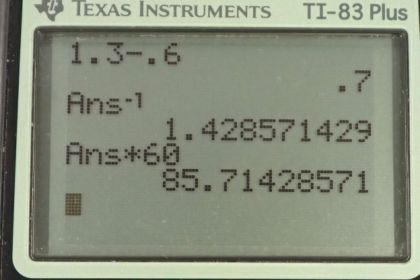Question
Use the ECG in Figure 20.34 to determine the heart rate in beats per minute assuming a constant time between beats.
Final Answer
Solution video
OpenStax College Physics, Chapter 20, Problem 95 (Problems & Exercises)

vote with a rating of
votes with an average rating of
.
Calculator Screenshots
Video Transcript
This is College Physics Answers with Shaun Dychko. From this graph of the electricity going through the heart that’s an ECG, Electrocardiogram, we can figure out the period of the heartbeats. And this is the blood pressure. I guess this is actually the ECG. This part down here. This part up here is just a graph of the blood pressure versus time. We could use either graph to figure out the answer to this question. But I use the period between the maximum pressures that are measured to that the systolic pressure. And this appears to happen at about, this peak happens at about 0.6 seconds. And then the next peak happens at about 1.3 seconds. And so the difference is 0.7 seconds between peaks. And so that is the period. Now the frequency will be the reciprocal of that. So one over 0.7 which is 1.429 beats per seconds. Now we want to have units of beat per minute, so we multiply that by 60 seconds per minute. And we are left with 86 beats per minute.
